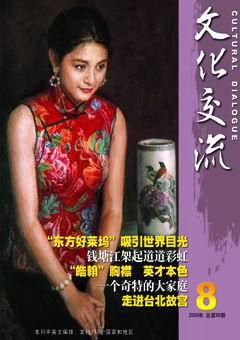Dowry Parades in Ningbo
Su Weiqian



The dowry used to be an important part of a marriage in Ningbo, a port city in Zhejiang Province. Its importance is testified by the dowry parade, a 1,000-year tradition in eastern Zhejiang. The dowry needed to be carried from one village to another when a daughter was to get married. Such a procession was seen by neighbors. Gradually, sending a dowry from one house to another became a public show. Experts have traced the earliest dowry procession in eastern Zhejiang to more than 1,000 years ago. A dowry parade was a public show of family pride, happiness and wealth. Its theme color was an eye-catching red, a symbol in China that celebrates happiness, luck, and fortune.
A special museum has been founded in Ningbo in celebration of this regional folk custom. The exhibits in the museum allow the visitor to peep into the regional folk custom, art and craft, tradition, folk aesthetics and psychology. The exhibits include large furniture pieces such as extravagant brides sedan chairs, wedding beds, chambers, etc, all painted in red.
In order to mark the 60th anniversary of the founding of the Peoples Republic of China in 2009, Ningbo Song and Dance Ensemble has staged a dance entitled “Dowry Parade: A Daughters Dream”. The inspiration of the dance drama came from the eye-catching tradition across Ningbo. The prop and costume designers visited the museum to get inspiration. The whole drama uses nearly 400 prop pieces and 520 costumes, most of which are copies of the exhibits at the museum.
Wang Xiaoying, the director of the dance drama, vice president of the Chinese Dramatists Association, and vice president of the National Theater Company of China, comments that he felt hemmed in by a sea of reds when stepping into the museum in Ningbo. He believes that every exhibit is a cultural symbol, and that every household device or a small piece of jewelry tells a story. It is the dream of every young woman in the region that a big dowry parade takes place in her honor.
Xin Honghai, the executive choreographer of the dance drama and a director with Shanghai Opera House, comments that the furniture in red highlights a feature unseen in other dance dramas. For example, the brides sedan chair can be opened magically. It is a dialogue between the bride and the sedan chair on the subject of beauty. The dance embodies the intangible cultural heritage and the folk lifestyle of Zhejiang.
The drama depicts the romance of a young girl and a young man who goes away to make a fortune, which would be a basis for a life they can share. The girl waits for the man to come back while waiting for the matchmaker to visit her mother to set up a marriage between the man and herself. The storyline creates opportunities to show the traditional dowry of red furniture and all relevant folk customs around Ningbo.
No wonder the audiences in Ningbo, when they were watching the dance drama, responded most warmly and excitedly to the dowry parade on the stage. They clapped hands when they saw things they were so familiar with. The ensemble has staged more than 20 performances of the dance drama around Ningbo. It has been staged in the Hangzhou Grand Theater. The Hangzhou show attracted more than 1,000 people. Also present at the show were some provincial leaders and VIP guests.□

